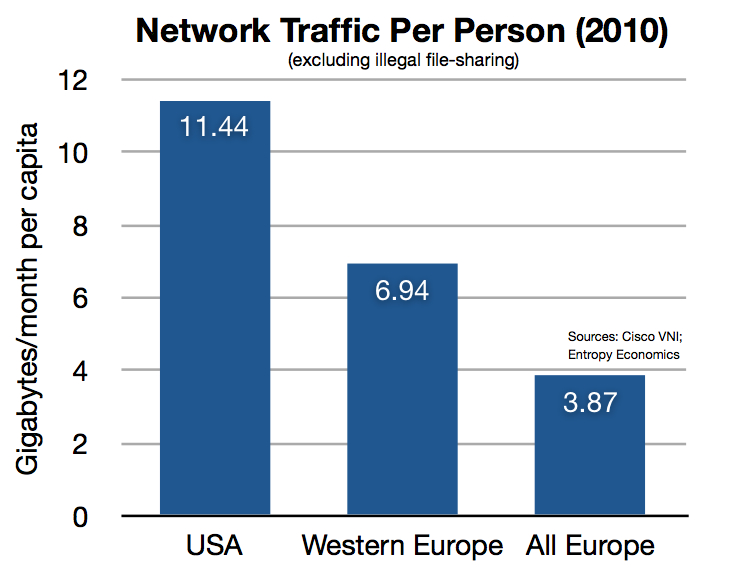With the release of the FCC’s National Broadband Plan, we continue to hear all sorts of depressing stories about the sorry state of American broadband Internet access. But is it true?
International comparisons in such a fast-moving arena as tech and communications are tough. I don’t pretend it is easy to boil down a hugely complex topic to one right answer, but I did have some critical things to say about a major recent report that got way too many things wrong. A new article by that report’s author singled out France as especially more advanced than the U.S. To cut through all the clutter of conflicting data and competing interpretations on broadband deployment, access, adoption, prices, and speeds, however, maybe a simple chart will help.
Here we compare network usage. Not advertised speeds, which are suspect. Not prices which can be distorted by the use of purchasing power parity (PPP). Not “penetration,” which is largely a function of income, urbanization, and geography. No, just simply, how much data traffic do various regions create and consume.
If U.S. networks were so backward — too sparse, too slow, too expensive — would Americans be generating 65% more network traffic per capita than their Western European counterparts?


